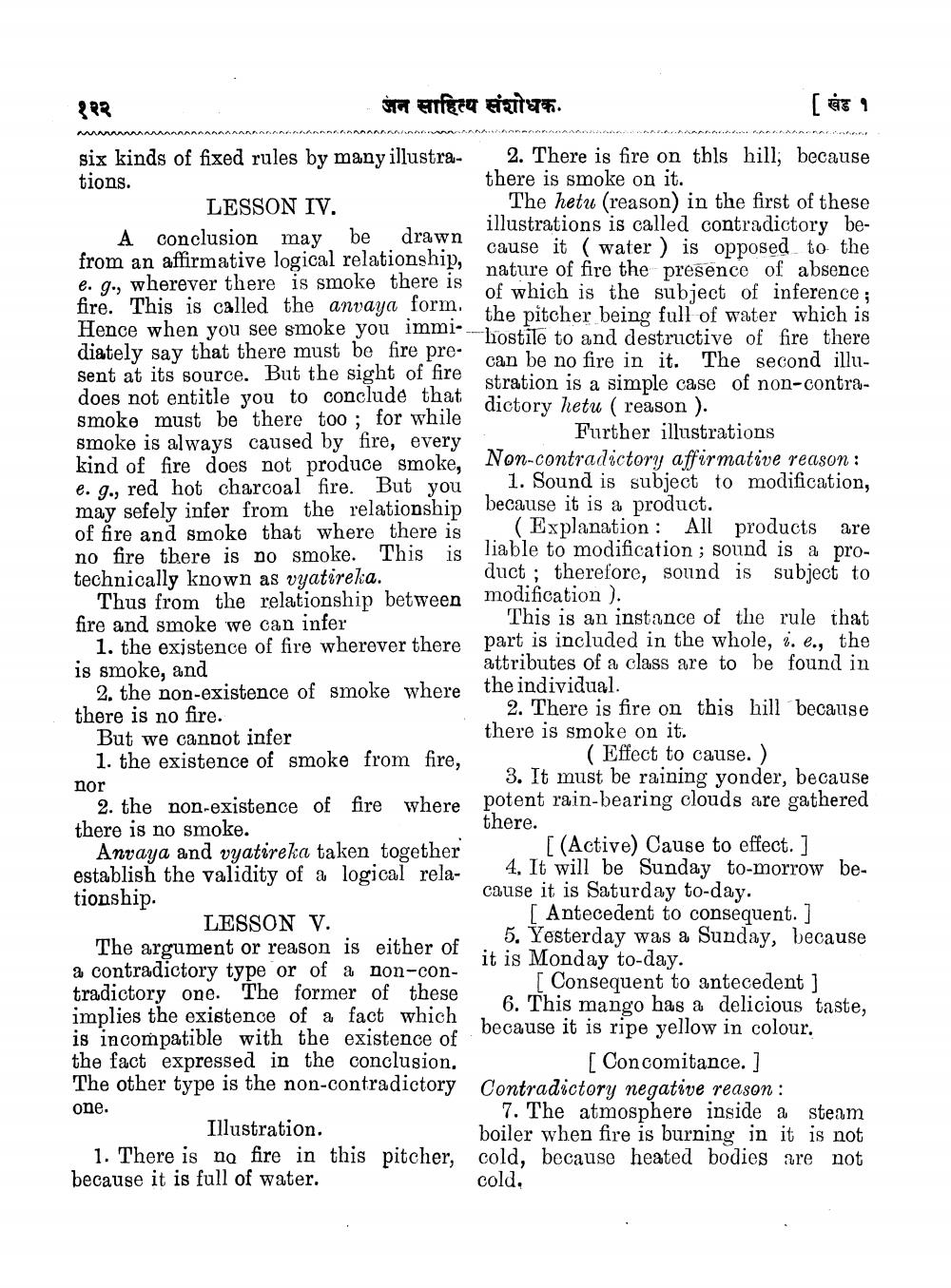________________
१२२
wwwwann
six kinds of fixed rules by many illustrations.
जन साहित्य संशोधक.
Thus from the relationship between fire and smoke we can infer
LESSON IV.
drawn
The hetu (reason) in the first of these illustrations is called contradictory benature of fire the presence of absence cause it (water) is opposed to the of which is the subject of inference; the pitcher being full of water which is Hence when you see smoke you immi-hostile to and destructive of fire there can be no fire in it. The second illustration is a simple case of non-contradictory hetu (reason).
A conclusion may be from an affirmative logical relationship, e. g, wherever there is smoke there is fire. This is called the anvaya form
diately say that there must be fire present at its source. But the sight of fire does not entitle you to conclude that smoke must be there too; for while smoke is always caused by fire, every kind of fire does not produce smoke, e. g., red hot charcoal fire. But you may sefely infer from the relationship of fire and smoke that where there is no fire there is no smoke. This is technically known as vyatireka.
1. the existence of fire wherever there is smoke, and
2. the non-existence of smoke where there is no fire.
But we cannot infer
1. the existence of smoke from fire,
nor
2. the non-existence of fire where there is no smoke.
[ खंड १
2. There is fire on this hill; because there is smoke on it.
Anvaya and vyatireka taken together establish the validity of a logical relationship.
LESSON V.
The argument or reason is either of a contradictory type or of a non-contradictory one. The former of these
implies the existence of a fact which is incompatible with the existence of the fact expressed in the conclusion. The other type is the non-contradictory
one.
AAAAAAA
Further illustrations
Non-contradictory affirmative reason: 1. Sound is subject to modification, because it is a product.
(Explanation: All products are liable to modification; sound is a product; therefore, sound is subject to modification).
This is an instance of the rule that part is included in the whole, s. e.. the attributes of a class are to be found in the individual.
2. There is fire on this hill because there is smoke on it.
(Effect to cause.)
3. It must be raining yonder, because potent rain-bearing clouds are gathered
there.
[(Active) Cause to effect. ]
4. It will be Sunday to-morrow because it is Saturday to-day.
[Antecedent to consequent. ] 5. Yesterday was a Sunday, because it is Monday to-day.
[Consequent to antecedent] because it is ripe yellow in colour. 6. This mango has a delicious taste,
[Concomitance. ] Contradictory negative reason:
Illustration.
7. The atmosphere inside a steam boiler when fire is burning in it is not
1. There is no fire in this pitcher, cold, because heated bodies are not because it is full of water.
cold.




